Technology
These Brands Are Redefining Fitness & Wellness. Meet Them in NYC
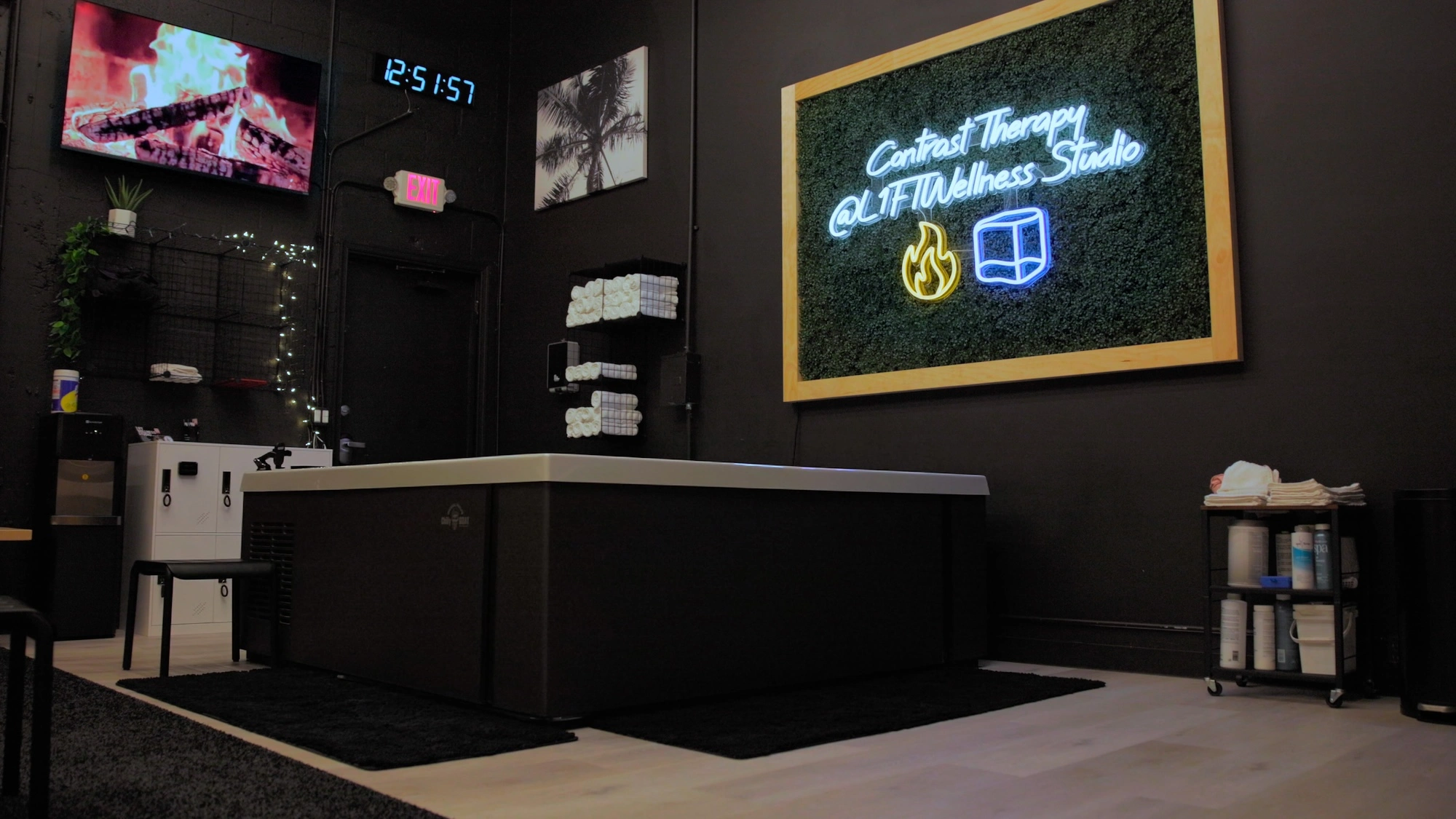
The inaugural ATN Innovation Summit is right around the corner, bringing top executives, fitness leaders and wellness visionaries to New York City for two days of impactful content.
The Summit will feature two experiential lounges stocked with the latest in fitness equipment and wellness modalities, spanning strength training, recovery, AI-powered tech and mindfulness. In each lounge, you’ll get a chance to test products, learn how they can transform your businesses, and speak with execs and experts.
Innovation Lounge: Top-tier brands showcase the most groundbreaking products and services in fitness and wellness. This experiential space allows attendees to interact directly with the latest innovations while providing valuable networking opportunities with executives across multiple industries.
Wellness Lounge: This exclusive space showcases the latest in wellness innovation while providing a dynamic setting for networking. The Wellness Lounge offers a unique opportunity to connect with top decision-makers in wellness, recovery and hospitality.
ATN breaks down the brands and products you’ll experience on June 17-18 in NYC (secure your ticket here to make sure you don’t miss out!):
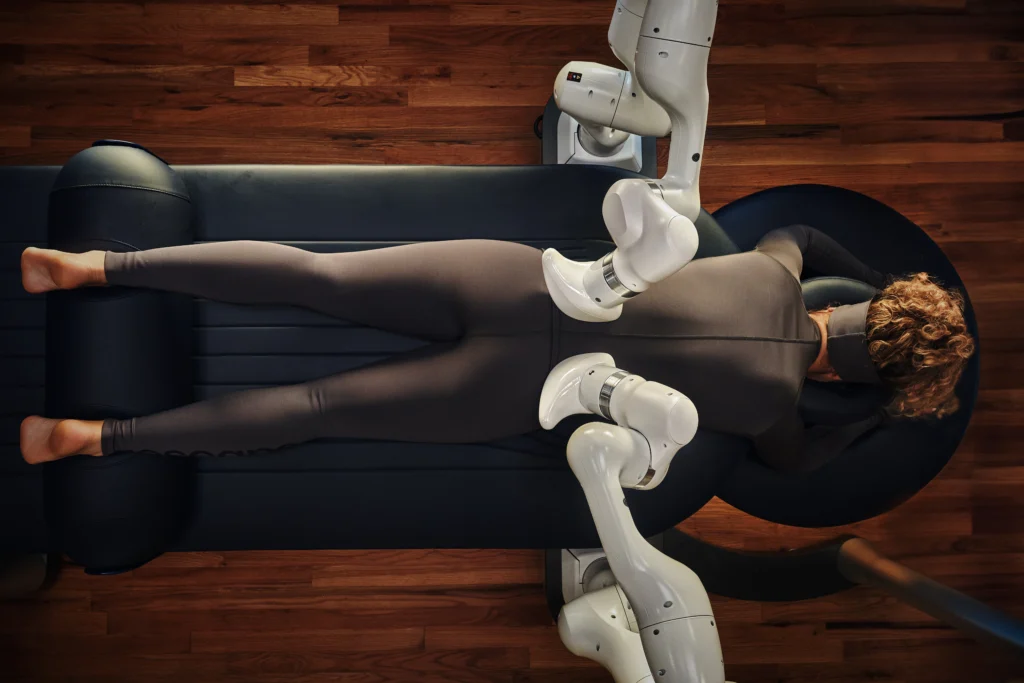
Aescape
Aescape is a pioneering lifestyle robotics company revolutionizing the wellness industry by introducing AI-powered, robotic massage experiences. Already found in select Equinox locations, upscale hotels and country clubs, Aescape is redefining self-care as a consistent, accessible and personalized experience. The Aertable adjusts for a customized fit, while the Aerscan maps your body’s muscle structure and the Aerpoints replicate the seven touch techniques of a skilled therapist.
- Where You’ll Find Them: Innovation Lounge
- What You’ll Experience: Feel the future of massage technology with a 20-minute Aescape demo.

Am-Finn
Am-Finn takes wellness and recovery seriously. The company offers a suite of modular, pre-cut or hand-finished commercial saunas and steam rooms. Its latest product, the Am-Finn Frost Locker, offers cold therapy at temperatures as low as 40 degrees and subtle humidity levels. The first-of-its-kind product is designed to replace nitrogen cabins and traditional cold plunges.
- Where You’ll Find Them: Wellness Lounge
- What You’ll Experience: Step inside the Am-Finn Frost Locker and feel a new way to embrace cold therapy.
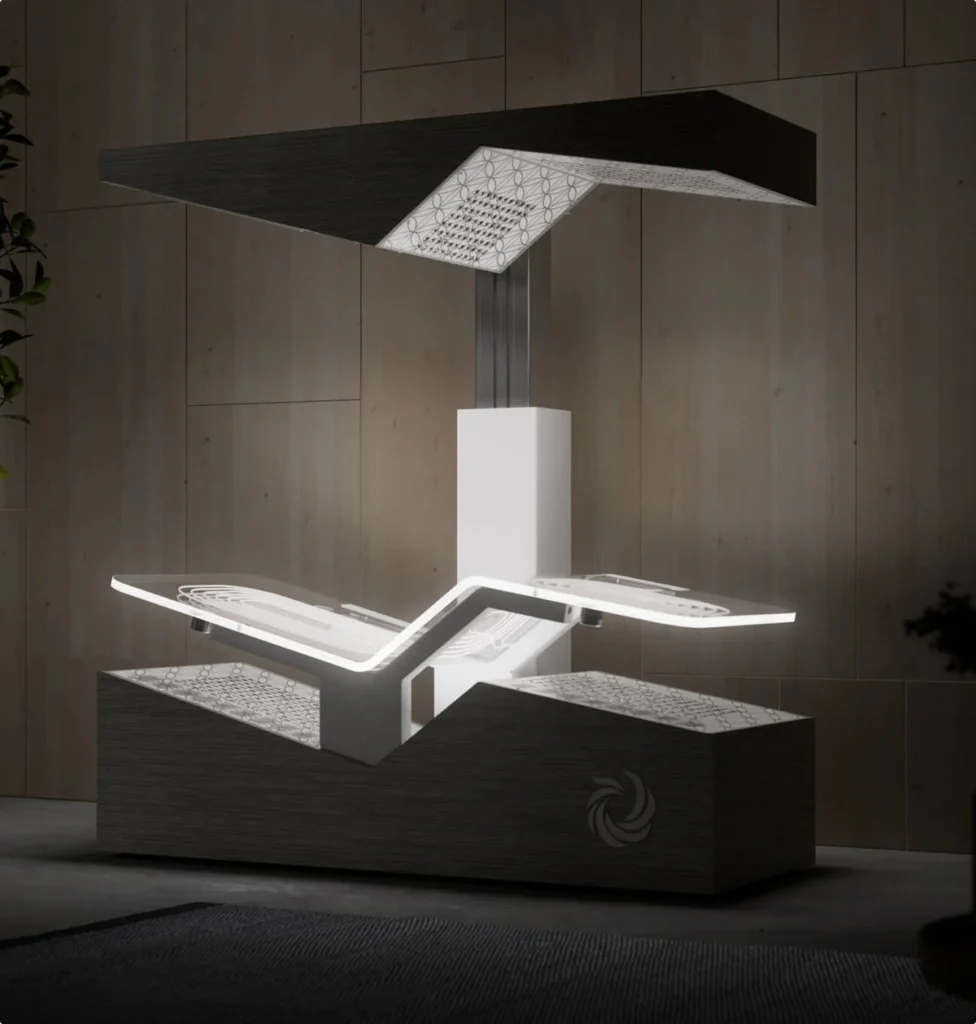
Ammortal
The Ammortal Chamber delivers rapid recovery, improved mood, a boosted natural defense system, and reduced pain and fatigue through stacked wellness technologies. Ammortal modalities include red and near-infrared (NIR) light photobiomodulation, molecular hydrogen, multi-wave pulsed electromagnetic and pulsed electric fields, and full-spectrum vibro-acoustics.
- Where You’ll Find Them: Wellness Lounge
- What You’ll Experience: Ammortal will be offering 20-minute Chamber sessions in the Ammortal Airstream on 5th Ave, giving you a chance to reset, recharge and rejuvenate like never before.

Becoming
Becoming offers transformative, personalized experiences designed to help high-achievers unlock their full potential. With expert coaching, customized assessments and tailored strategies, participants overcome burnout, reclaim balance and enhance leadership skills – all while reconnecting with their true selves for lasting success and deeper fulfillment.

Butter Payments
Failed payments are a complex problem – and because payments fail for different reasons and return different error codes, sticking with a single approach can limit your performance. Butter’s advanced framework uses machine learning to tailor payment recovery specifically to your business by learning with each transaction.
- Where You’ll Find Them: Innovation Lounge
- What You’ll Experience: Stop by to learn how Butter can reduce customer churn and increase revenue.
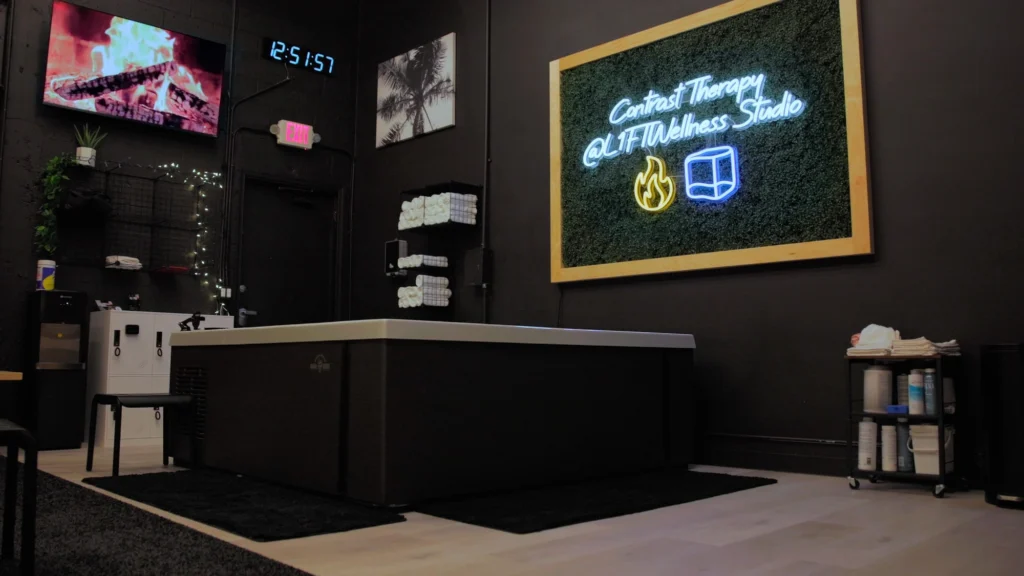
Chilly GOAT Cold Tubs
For more than 25 years, Chilly GOAT Cold Tubs has offered a range of cold tubs, hot spas, and contrast therapy tubs designed to help athletes, high-performers and wellness seekers feel their best, faster. The brand’s Alpine Cold Tub is plug and play, delivering temperatures as low as 40° F in an efficient 84’ footprint.
- Where You’ll Find Them: Wellness Lounge
- What You’ll Experience: Step into the Alpine Cold Tub and experience the difference top craftsmanship makes in your cold plunge experience.
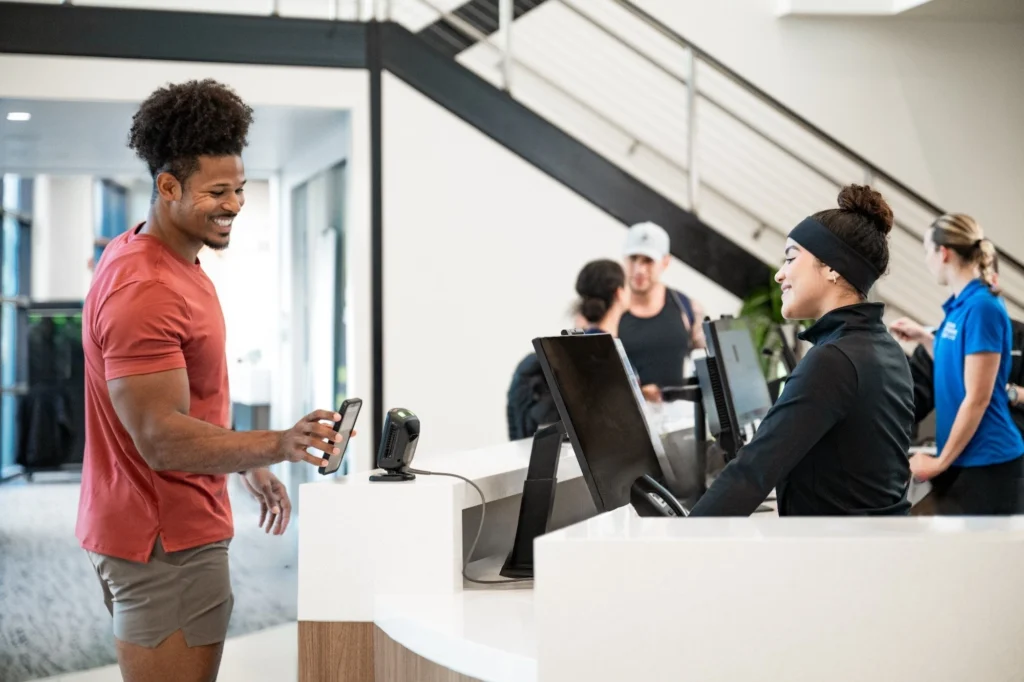
Daxko
Daxko provides innovative technology that maximizes productivity, increases engagement and drives sustainable growth. Daxko’s comprehensive suite of software solutions includes Club Automation (multi-location management), Zen Planner (scheduling and payment processing), Motionsoft (member management, billing and reporting) and Engage Pro (personalized communication and targeted campaigns). Daxko Operations unifies everything, offering a centralized platform.
- Where You’ll Find Them: Innovation Lounge
- What You’ll Experience: Learn how Daxko can help your fitness and wellness business scale with confidence through best-in-class software.
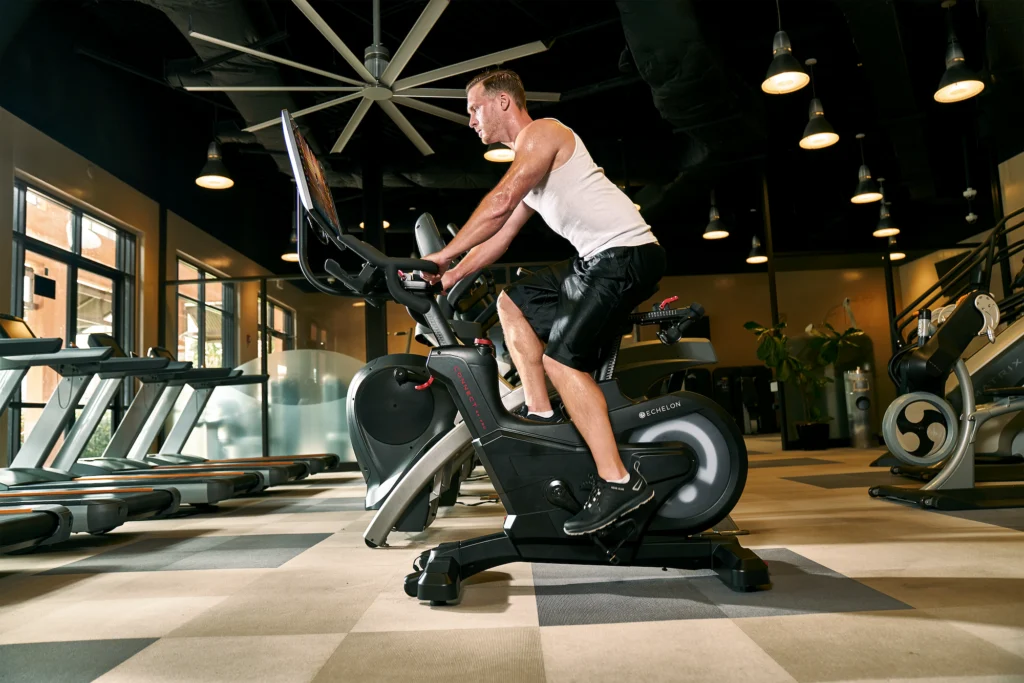
Echelon
Echelon transforms outcomes through intelligent fitness, scalable solutions and a connected ecosystem to help gyms thrive. The brand’s latest innovation, StrengthIQ, offers a smart strength training ecosystem with personalized workouts, real-time feedback, automatic resistance adjustments and AI-guided progressions.
- Where You’ll Find Them: Innovation Lounge
- What You’ll Experience: Get an up-close look at Echelon’s innovations like StrengthIQ, and learn how Echelon products help increase upsells and drive engagement.
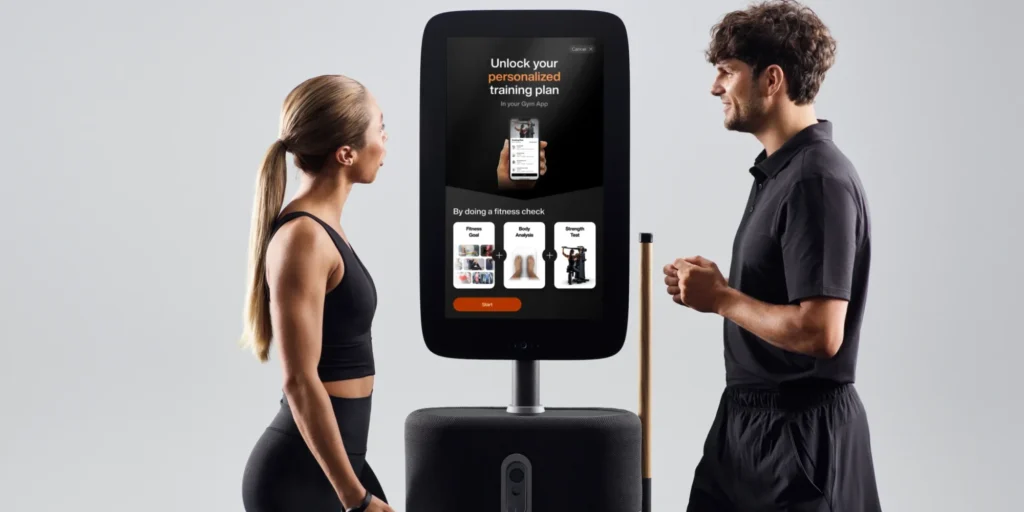
EGYM
EGYM’s latest innovation, Genius uses advanced AI to make the entire gym floor more intelligent, integrating 200+ leading fitness brands into a single, seamless training experience. Backed by over a billion data points, EGYM Genius creates hyper-personalized training plans for members that adapt to their goals, fitness levels and a gym’s complete equipment inventory including free weights and selectorized strength.
- Where You’ll Find Them: Innovation Lounge
- What You’ll Experience: Get a glimpse into the future of AI-powered fitness with EGYM Genius and learn how you can provide a fully customized and connected fitness journey for your members.
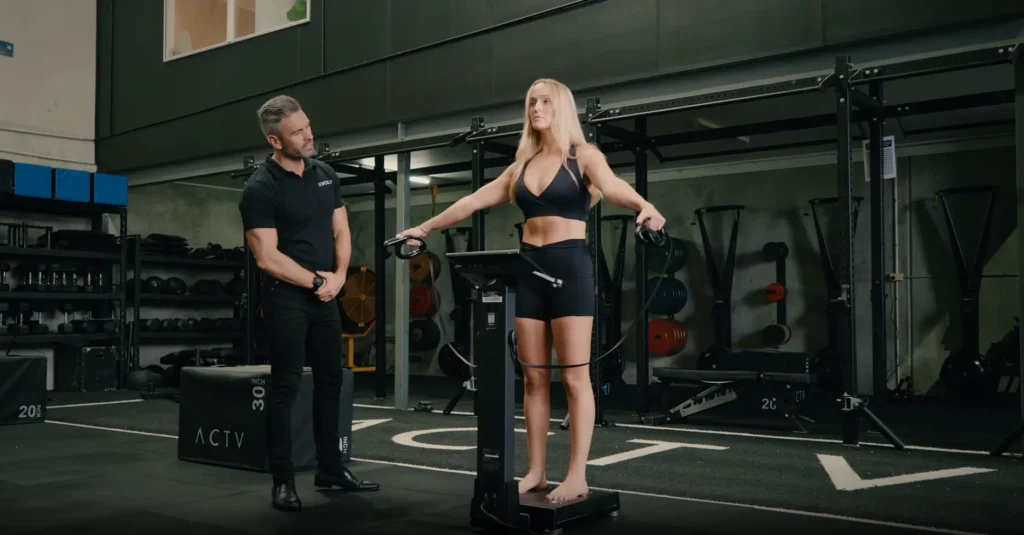
Evolt
The Evolt 360 body composition scanner is a simple-to-use, 60-second scan that provides detailed data through more than 40 measurements including muscle mass, fat mass, water and minerals. Evolt allows you to better understand your members, track their progress and provide personalized nutrition and supplement advice.
- Where You’ll Find Them: Wellness Lounge
- What You’ll Experience: Get your own personalized assessment and learn how you can use advanced body-composition tech to drive better outcomes for your members.
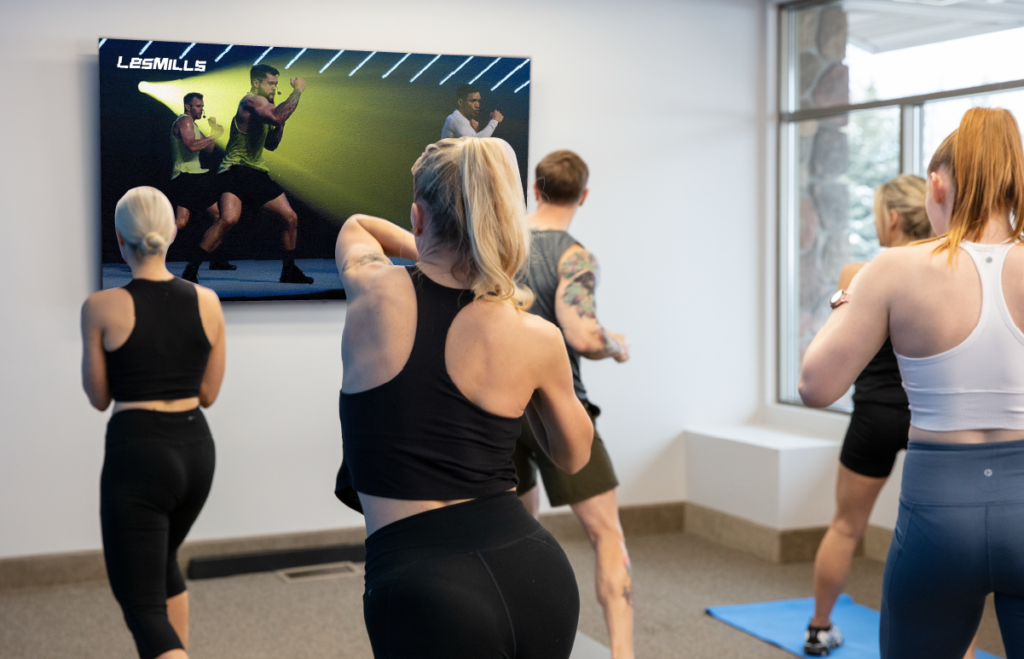
Fitness On Demand
Fitness On Demand offers a comprehensive wellness and engagement platform that provides personalized, training, nutrition, mindfulness and recovery content inside the gym, at home and on the go. Fitness on Demand’s new Recovery Station provides guided sessions on warm-ups, cool-downs, yoga, mobility, core and mindfulness through an interactive touchscreen TV. The company’s Group Studio platform offers an extensive library of on-demand classes.
- Where You’ll Find Them: Innovation Lounge
- What You’ll Experience: Get an inside look at Fitness On Demand’s Recovery Station, Group Studio platform and premium content library.
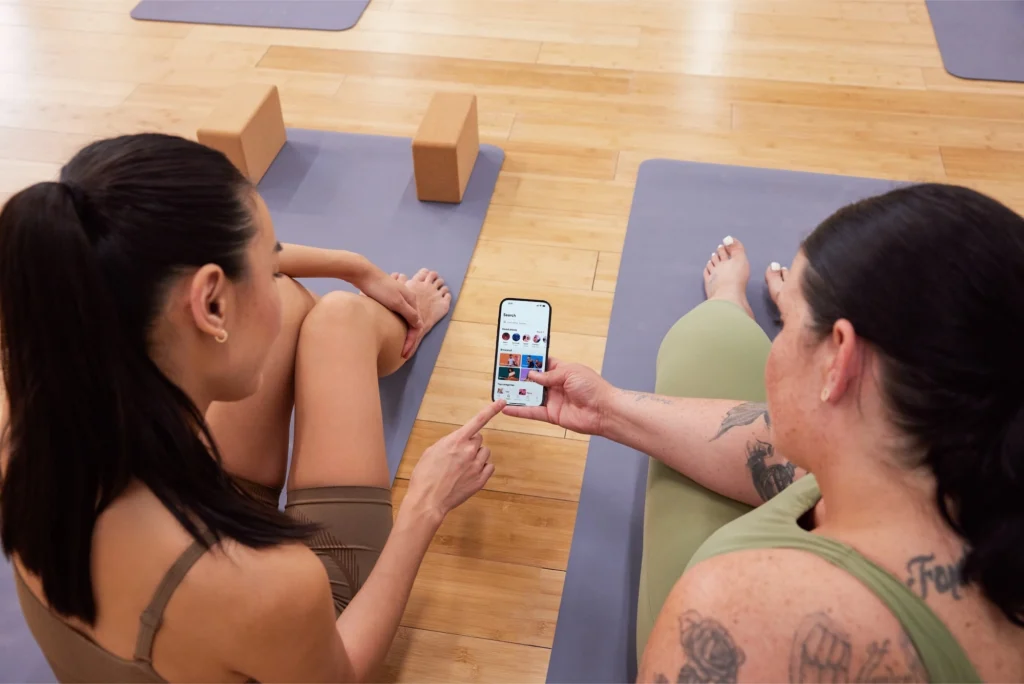
Mindbody + ClassPass
Mindbody provides the tools over 42,000 gyms, studios, salons and spas use to run, market and grow, from booking and payments to marketing and staff management. ClassPass works directly with businesses to merchandise excess inventory, attract new clients and unlock additional revenue. Together, they leverage AI to offer personalized experiences for consumers and actionable insights for businesses.
- Where You’ll Find Them: Innovation Lounge
- What You’ll Experience: Learn about tech including the Mindbody Branded App Tool Suite, Mindbody Payments, ClassPass for Business and more.
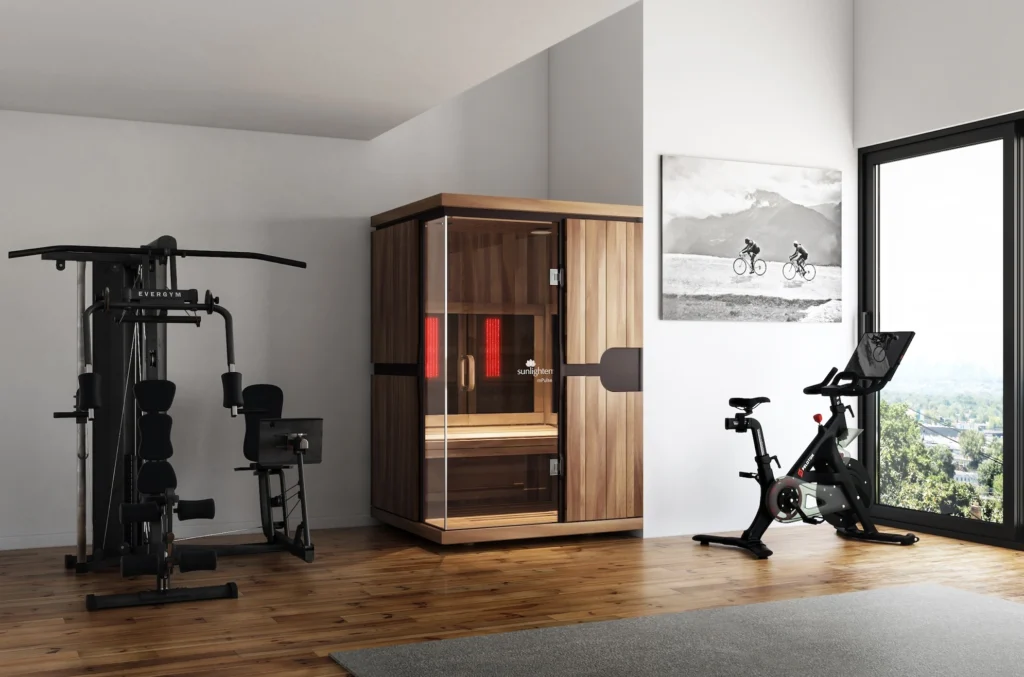
Sunlighten
Sunlighten provides infrared sauna products for detoxification, relaxation, weight loss, muscle recovery and overall vitality. The mPulse Smart Sauna is Sunlighten’s premier, patented three-in-one precision wavelength full spectrum infrared sauna, now with integrated red light. It’s the world’s first and only dynamic sauna that offers the ease of pre-set programs to target specific health benefits.
- Where You’ll Find Them: Wellness Lounge
- What You’ll Experience: Feel Sunlighten’s infrared sauna technology for yourself, and learn about the health benefits.
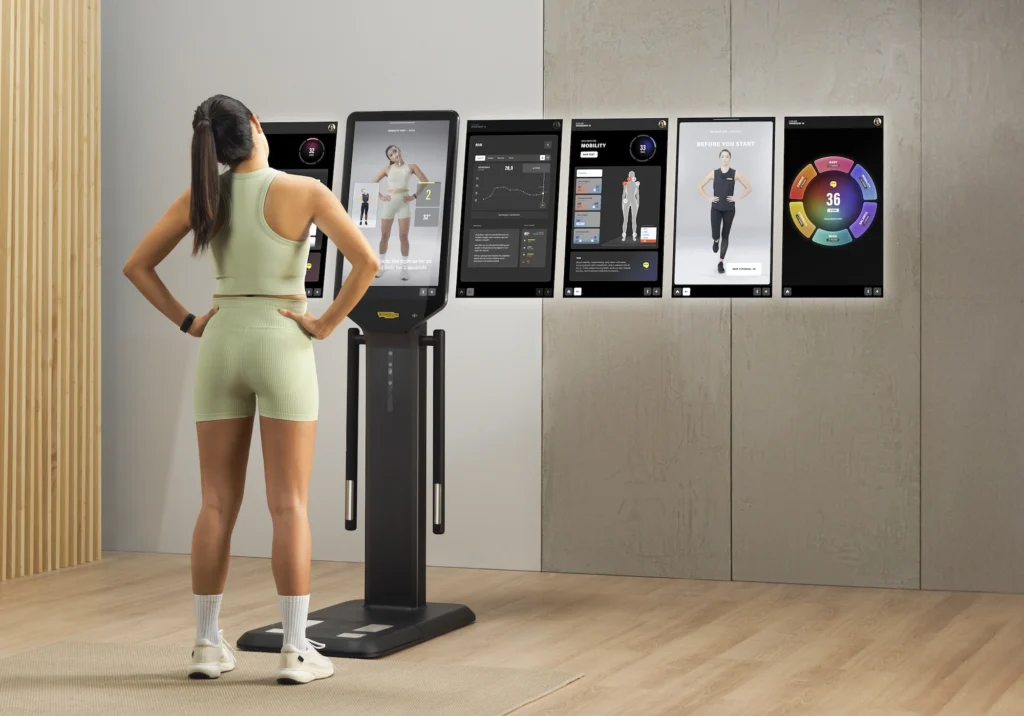
Technogym
The Technogym Ecosystem features award-winning equipment spanning Pilates, treadmills, bikes, strength and more. Technogym Checkup uses advanced biometrics and AI to assess physical and cognitive conditions, providing users with their Wellness Age, a simple yet powerful metric to compare to real age. With this information, the AI-powered Technogym Coach adjusts training programs to maximize results and satisfaction.
- Where You’ll Find Them: Innovation Lounge
- What You’ll Experience: Get your own personalized assessment and Wellness Age from Technogym’s breakthrough new product.
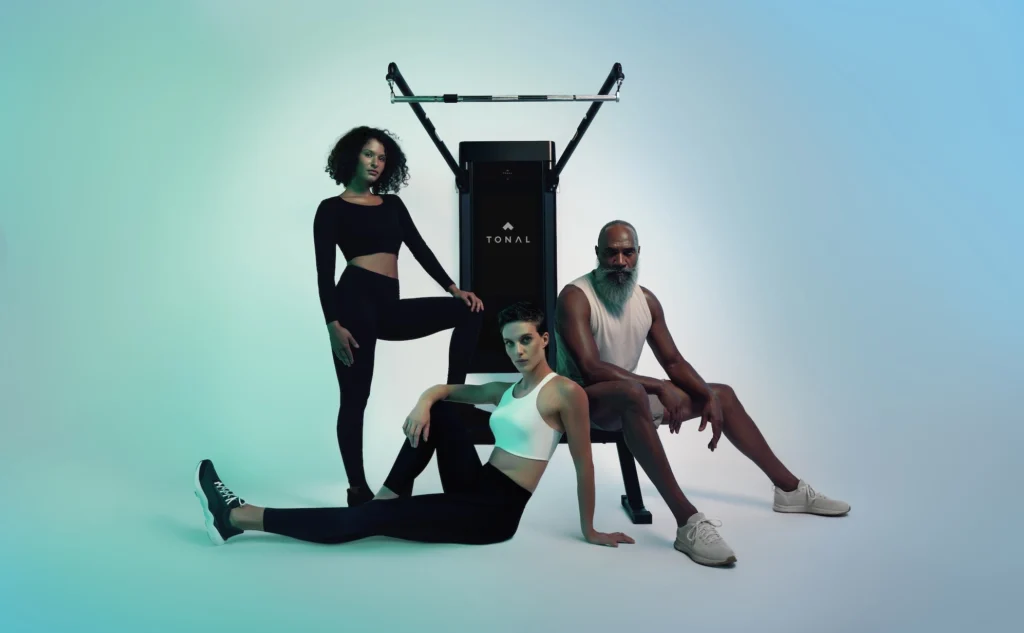
Tonal
Smart home gym leader Tonal provides strength training expertise with equipment that offers science-backed workouts and real-time guidance to automatically assess needs, track progress and unlock insights. The new Tonal 2 offers a high-res camera, allowing users to see themselves as well as perform drop sets and aero HIIT, a combination of cardio and strength training.
- Where You’ll Find Them: Innovation Lounge
- What You’ll Experience: Give the new Tonal 2.0 a try and see what all the hype is about. Plus, get your questions answered by Tonal experts.
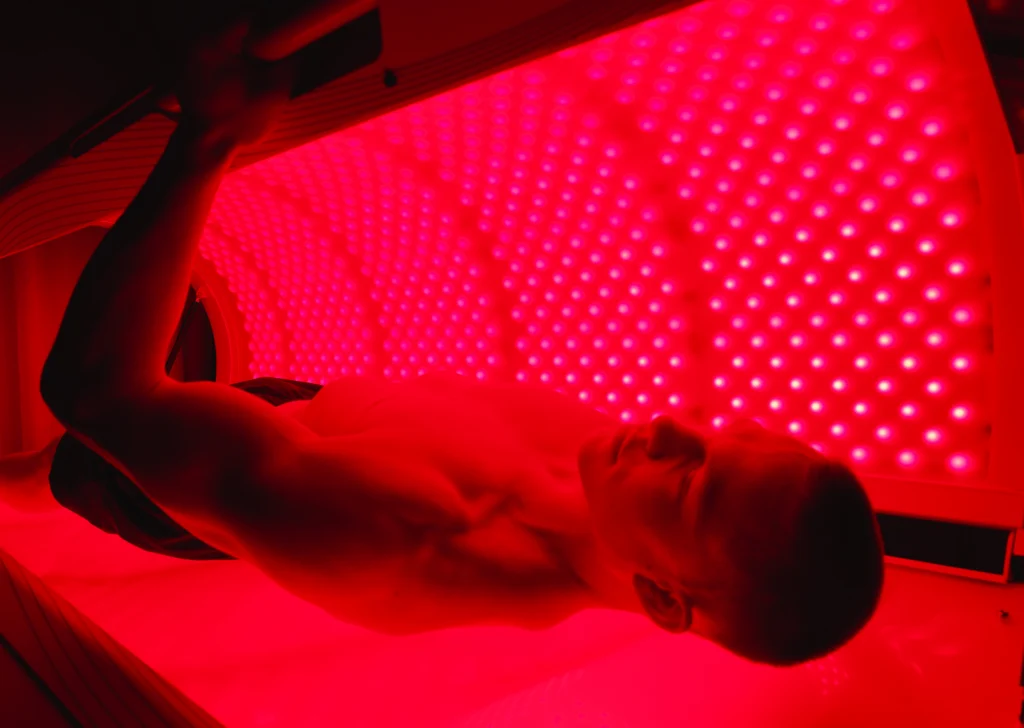
WellnessJK
WellnessJK supports a range of health-focused goals, from muscle recovery and pain relief to relaxation and rejuvenation. The company’s Wellsystem HydroWave, an advanced hydro-jet massage bed, offers contactless, full-body relaxation and recovery. The RedWave Plus, a cutting-edge system that blends near-infrared and red-light technology, boosts muscle recovery, circulation and overall wellness.
- Where You’ll Find Them: Wellness Lounge
- What You’ll Experience: Try out the Wellsystem HydroWave and RedWave Plus for yourself, and discover the physical and mental well-being benefits of both technologies.
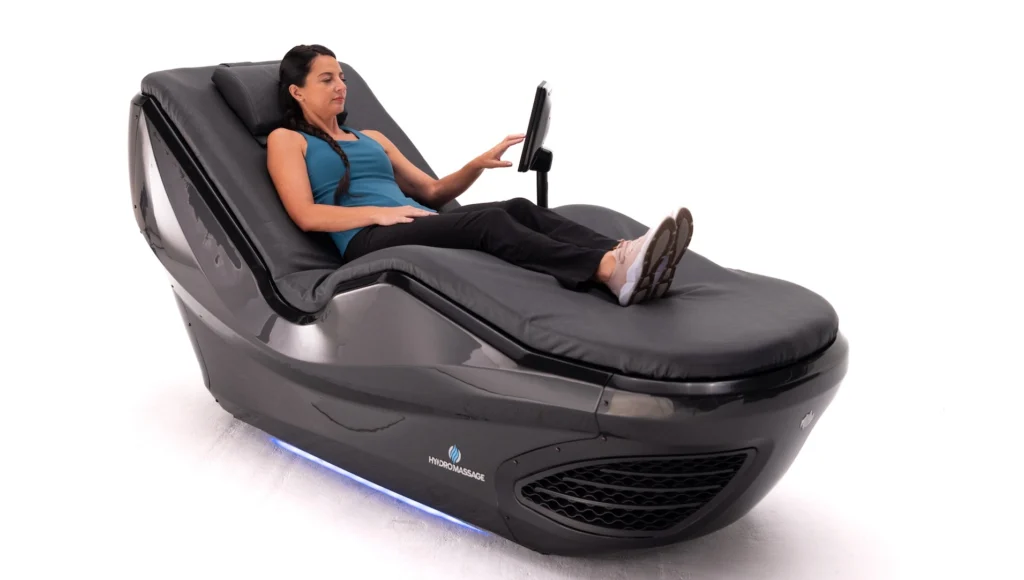
WellnessSpace Brands
WellnessSpace Brands offers an industry-leading suite of experiential wellness products, including HydroMassage Beds and Lounges, CryoLounge+ Chairs and RelaxSpace Wellness Pods. The products are convenient and easy to use with no staffing required. The brand’s latest launch is the HydroMassage G3, a personalized full-body heated massage lounge chair for wellness and muscle recovery.
- Where You’ll Find Them: Wellness Lounge
- What You’ll Experience: Take a break from the hustle and bustle of the Innovation Summit and try the new HydroMassage G3.
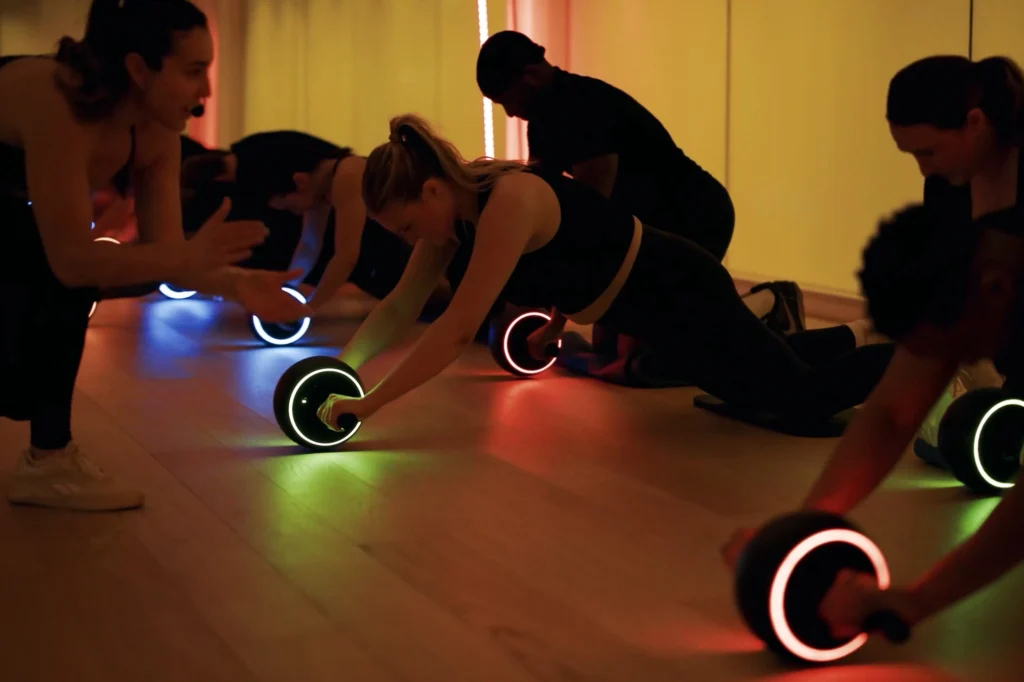
ZeroWheel
ZeroWheel is a fitness technology company that helps people live healthier lives by taking a core-focused approach to full-body training. ZeroWheel is a compact, motorized training device that transforms any space into an energetic fitness environment. Through a blend of hardware and an integrated app, ZeroWheel delivers dynamic, real-time resistance and assistance to boost strength, balance, mobility and overall well-being.
- Where You’ll Find Them: Innovation Lounge
- What You’ll Experience: Give ZeroWheel a try and see why it’s the perfect tool for fitness classes and personal training sessions.
The ATN Innovation Summit 2025, a can’t-miss two-day event featuring immersive content, cutting-edge product demos and ample networking opportunities, comes to New York City this June 17-18. To get your tickets or learn more, click here.
Technology
How Smart Technology Is Transforming Online Gaming

Smart technology has quietly reshaped nearly every part of modern life, from how we manage our homes to how we consume entertainment. One area seeing particularly rapid innovation is online gaming. Advances in artificial intelligence, cloud computing, and mobile connectivity are not just improving visuals or speed — they’re fundamentally changing how users interact with digital gaming platforms. For tech-savvy audiences, this evolution represents a fascinating case study in how intelligent systems enhance user experience at scale.
Online gaming platforms today are built on sophisticated technology stacks designed to personalize content, streamline performance, and improve security. This shift is especially visible in online casino gaming, where algorithms analyze player behavior to deliver tailored game recommendations and seamless performance across devices. For example, players looking to explore modern gaming platforms can Experience the thrill of top-rated casino games at Winna while seeing firsthand how smart systems elevate engagement and usability.
As entertainment increasingly converges with technology, the online gaming sector offers valuable insight into how innovation drives adoption, retention, and trust.
AI and Machine Learning Powering Smarter Gameplay
 AI and Machine Learning Powering Smarter GameplayiStock
AI and Machine Learning Powering Smarter GameplayiStock
Artificial intelligence plays a central role in today’s online gaming experiences. Machine learning models continuously analyze gameplay data to understand user preferences, playing patterns, and engagement habits. This allows platforms to create more intuitive interfaces and personalized recommendations without requiring users to manually search for content.
In casino-style gaming, AI helps recommend games based on past behavior, optimize load times, and ensure smooth performance during high-traffic periods. Beyond user experience, AI is also critical for maintaining fair play. Behavioral analysis tools can detect unusual activity, flag potential fraud, and help operators maintain secure, trustworthy environments — an essential factor for platforms handling real-money transactions.
From a broader technology perspective, these systems demonstrate how real-time data processing and adaptive learning models are becoming essential components of modern digital services.
Cloud Computing and the Shift to Device-Agnostic Gaming
 Cloud Computing on the rise iStock
Cloud Computing on the rise iStock
Cloud technology has removed many traditional barriers to entry for online gaming. Instead of relying on powerful local hardware, games can now be rendered and processed remotely, with gameplay streamed directly to users’ devices. This shift allows complex, graphics-rich experiences to run smoothly on smartphones, tablets, and laptops.
For consumers, this means flexibility — gaming is no longer tied to a single device or location. For developers and operators, cloud infrastructure enables faster updates, scalable performance, and reduced downtime. These benefits are especially important for online platforms that must remain accessible around the clock while supporting thousands of simultaneous users.
As cloud adoption accelerates across industries, online gaming stands out as one of the clearest examples of how distributed computing enhances both performance and accessibility.
Mobile Connectivity and Market Growth
Mobile technology has been one of the biggest drivers of growth in the online gaming sector. Improvements in smartphone processing power, combined with faster networks like 5G, have made mobile gaming experiences nearly indistinguishable from desktop or console play.
Industry data highlights just how significant this shift has been. According to Statista’s research on mobile gaming market trends, mobile games account for a substantial share of global gaming revenue, driven by ease of access and growing consumer demand.
For online gaming platforms, optimizing for mobile is no longer optional. Responsive interfaces, fast-loading content, and secure mobile payment systems are now baseline expectations. Platforms that successfully integrate these elements benefit from higher engagement and broader audience reach.
Security Innovations Building User Trust
Security remains a top concern for users engaging with online gaming platforms, particularly those involving financial transactions. Smart technology has enabled several major advancements in this area, helping build confidence and credibility across the industry.
Modern platforms rely on encryption protocols to protect personal and financial data, while AI-powered monitoring systems analyze activity in real time to identify irregular behavior. Some platforms are also experimenting with biometric authentication and blockchain-based transaction verification to further strengthen transparency and security.
These technologies not only protect users but also demonstrate how advanced security solutions can be deployed at scale without sacrificing user convenience — a balance many digital industries continue to pursue.
Social Features and Interactive Experiences
 Social Features and Interactive Experiences iStock
Social Features and Interactive Experiences iStock
Gaming has evolved from a solitary activity into a highly social experience. Smart technology has enabled real-time chat, live multiplayer interaction, and integrated streaming features that allow users to share gameplay instantly.
Live gaming and streaming platforms have blurred the line between player and audience, creating communities built around shared interests and experiences. As virtual and augmented reality technologies continue to mature, these social elements are expected to become even more immersive, allowing users to interact in fully realized digital environments.
This shift reflects a broader trend in tech-driven entertainment: experiences are no longer just consumed — they’re shared.
What the Future Holds for Smart Gaming
The next wave of innovation in online gaming will likely focus on deeper AI integration, enhanced immersion, and cross-platform compatibility. AI-generated content, adaptive storytelling, and predictive personalization will allow platforms to deliver experiences that evolve with each user.
Virtual reality, augmented reality, and spatial computing are also poised to redefine how players interact with digital worlds. Combined with cloud infrastructure and intelligent analytics, these technologies will continue pushing online gaming toward more immersive, responsive, and inclusive experiences.
Conclusion
Online gaming has become a powerful showcase for how smart technology can transform digital experiences. Through AI-driven personalization, cloud-based performance, mobile optimization, and advanced security, modern platforms are delivering entertainment that is more accessible, engaging, and secure than ever before.
For tech-focused audiences, this evolution highlights the practical impact of intelligent systems operating behind the scenes. As innovation continues, online gaming will remain at the forefront of demonstrating how technology enhances not just how we play — but how we connect, interact, and experience digital entertainment.
From Your Site Articles
Related Articles Around the Web
Technology
A First Look at the TLTC Innovation Hub

Launching for the Spring 2026 semester, the TLTC Innovation Hub will expand hands-on discovery, immersive learning and high-quality content creation
for the Seton Hall community. The Hub supports academic inquiry and creative exploration
across disciplines by bringing together fabrication tools, XR and AI technologies
and production studios, plus open collaboration spaces and consultation rooms.
“We built the Innovation Hub so that learning does not stop at the classroom door,”
said Michael Soupios, executive director of the Teaching, Learning and Technology Center. “It is a creative space where students and faculty can experiment with new tools,
turn ideas into prototypes and explore projects beyond traditional assignments. The
Innovation Hub helps transform how we teach and learn by giving our community room
to explore, make and imagine what is possible.”
The Innovation Hub includes an open lounge and collaboration space with comfortable
seating, flexible work areas, ambient lighting and easy power access. The Hub also
features several dedicated studios, each designed for a different kind of making,
creating and problem-solving. Here is what students, faculty and staff can expect
in each area.
Maker Studio
 A hands-on space for designing, prototyping and building. Users can work with 3D printing,
A hands-on space for designing, prototyping and building. Users can work with 3D printing,
laser engraving and desktop CNC machining, plus sublimation printing, vinyl cutting
and robotics or microcontroller kits. Completed 3D prints can be retrieved through
secure project pickup lockers.
Learn more about the Maker Studio and available equipment.
XR/AI Studio
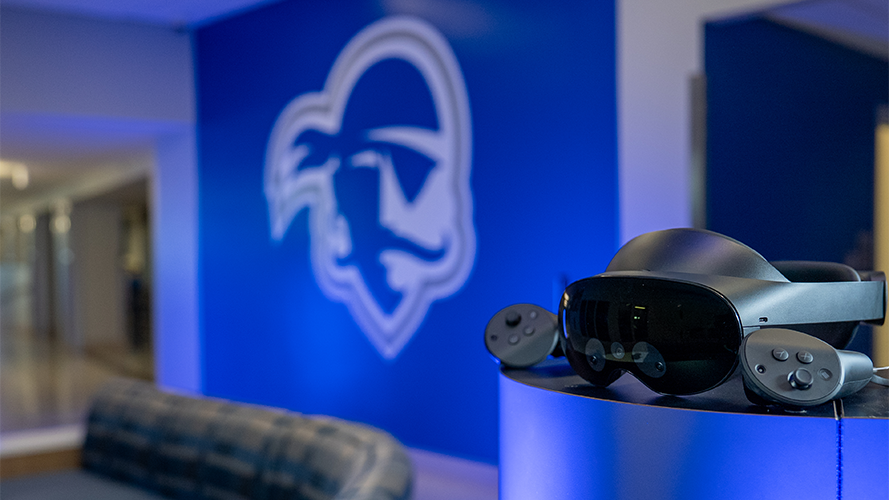 A dedicated space for extended reality, mixed reality and AI exploration. Users can
A dedicated space for extended reality, mixed reality and AI exploration. Users can
work with Meta Quest Pro headsets, immersive applications and simulations, along with
workshops and training to support XR integration in courses and projects.
Explore the XR and AI Studio.
Content Creation Studios
 Four spaces for creating high-quality audio and video, including a four-microphone podcast studio, a one-button video studio, a lightboard studio and a production
Four spaces for creating high-quality audio and video, including a four-microphone podcast studio, a one-button video studio, a lightboard studio and a production
studio supported by the TLTC’s Digital Media Team.
Learn more about the Content Creation Studios.
Solutions Studio
 The Solutions Studio is the Innovation Hub’s walk-up support desk and first stop for
The Solutions Studio is the Innovation Hub’s walk-up support desk and first stop for
technology assistance. Beginning in Spring 2026, select Information Technology services
currently located in Corrigan Hall will operate from the Innovation Hub, providing
support for technology questions and laptop or mobile device issues. Located in the
open-style seating area next to the elevator, the Solutions Studio is designed to
be approachable and make it easy to get the help you need.
“By relocating the Solutions Studio to a central location in the Innovation Hub, we
are ensuring that every member of the University community has easy access to the
technology support they need,” said John Fernandes, senior director of IT Service
Management. “From assistance with SHU network login issues such as Wi-Fi and account
access to hardware and software support, our goal is to deliver a premier experience.
Whether you are troubleshooting an issue or learning something new, we invite everyone
to stop by. We are here to help.”
Visit the Solutions Studio.
The Hub will officially open in the Spring 2026 semester, with a grand opening celebration
and a blessing of the new Walsh Library entrance planned later in the semester. The
TLTC Innovation Hub is designed to make innovation more accessible for students, faculty
and staff. Whether you are studying, meeting with classmates, brainstorming a project
or exploring emerging technologies, the Innovation Hub is a place where learning becomes
interactive, content is created and ideas come to life.
Updates on services and access will be shared in the coming weeks. Visit the TLTC Innovation Hub webpage for additional information.
Categories:
Science and Technology
Technology
Phygital Baseball Board Games : Base on Board 2.0
Purely digital games lack tactile, social play, while classic board games can’t adapt probabilities, stream competition, or evolve with live data. Base on Board 2.0 delivers the best of both with dynamic E-ink smart dice that shift probabilities in real time using MLB stats, plus AI commentary and visual effects. Altogether, Base on Board 2.0 delivers authentic baseball drama and supports competitions in a physical-digital gaming hybrid experience.
Technology
Gaming PC Market | Global Market Analysis Report
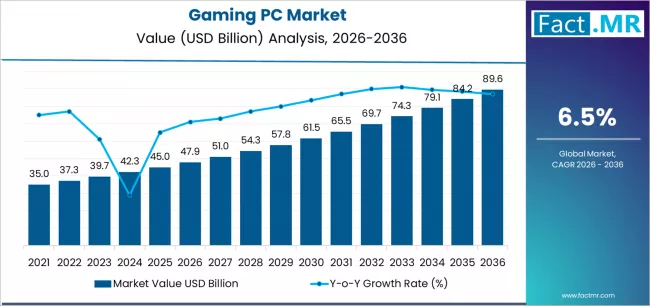
Gaming PC Market Forecast and Outlook 2026 to 2036
The global gaming PC market is valued at USD 47.9 billion in 2026 and is projected to reach USD 89.6 billion by 2036, reflecting an absolute increase of USD 41.7 billion. This represents total growth of 87.1%, with the market expanding at a CAGR of 6.5% over the forecast period.
Growth is driven by rising demand for high-performance gaming systems, increasing esports participation, and growing requirements for advanced gaming experiences across competitive gaming, content creation, and virtual reality applications.
Quick Stats for Gaming PC Market
- Gaming PC Market Value (2026): USD 47.9 billion
- Gaming PC Market Forecast Value (2036): USD 89.6 billion
- Gaming PC Market Forecast CAGR: 6.5%
- Leading System Type in Gaming PC Market: Desktop Gaming PCs (72.3%)
- Key Growth Regions in Gaming PC Market: Asia Pacific, North America, Europe
- Key Players in Gaming PC Market: Dell Technologies Incorporated, Hewlett-Packard Inc., ASUSTeK Computer Inc., Micro-Star International Co. Ltd., Corsair Gaming Incorporated
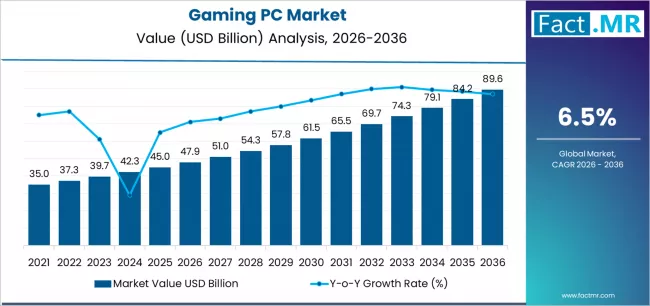
Desktop gaming PCs are expected to account for 72.3% of market share in 2026, supported by their superior performance capabilities, upgrade flexibility, and thermal management advantages. Competitive gaming applications are projected to hold 48.7% share, driven by demand for high refresh rates, low-latency processing, and stable performance in professional esports and streaming environments.
Between 2026 and 2030, the market is forecast to grow to USD 65.8 billion, contributing 42.9% of total decade growth, supported by advancing hardware standards and immersive gaming demand. From 2030 to 2036, expansion to USD 89.6 billion will be driven by AI-integrated systems, cloud-gaming hybrids, and expanding virtual reality and content creation ecosystems.
Gaming PC Market Key Takeaways
| Metric | Value |
|---|---|
| Estimated Value in (2026E) | USD 47.9 billion |
| Forecast Value in (2036F) | USD 89.6 billion |
| Forecast CAGR (2026 to 2036) | 6.5% |
Category
| Category | Segments |
|---|---|
| System Type | Desktop Gaming PCs; Gaming Laptops; Mini Gaming PCs; Workstation Gaming Systems; Other System Configurations |
| Application | Competitive Gaming; Content Creation; Virtual Reality Gaming; Casual Gaming; Others |
| End-User | Individual Gamers; Esports Organizations; Content Creators; Gaming Cafes; Others |
| Price Range | Entry-Level Systems; Mid-Range Systems; High-End Systems; Premium Configurations |
| Region | North America; Europe; Asia Pacific; Latin America; Middle East & Africa |
Segmental Analysis
By System Type, Which Segment Holds the Dominant Market Share?

Desktop gaming PCs are projected to account for 72.3% of the gaming PC market in 2026, maintaining clear dominance. This reflects their higher processing capability, graphics performance, and upgrade flexibility compared with portable systems. Compatibility with advanced GPUs, cooling solutions, and peripheral ecosystems continues to support adoption among enthusiasts and competitive players.
By Application, Which Segment Registers the Highest Share?

Competitive gaming applications are projected to represent 48.7% of market demand in 2026, driven by the growth of esports and performance-intensive gaming formats. Professional and semi-professional players require stable frame rates, low latency, and hardware customization, reinforcing demand for high-performance gaming PCs. Ongoing improvements in gaming engines and competitive platforms are expected to sustain this segment’s leading position.
What are the Drivers, Restraints, and Key Trends of the Gaming PC Market?
The gaming PC market is expanding due to rising adoption of competitive gaming, growth of esports ecosystems, and increasing demand for high-performance systems across entertainment and professional use cases. Gamers and content creators require powerful hardware to support high frame rates, advanced graphics, and simultaneous gameplay and streaming. However, market growth is restrained by competition from gaming consoles, price sensitivity among mainstream consumers, and the technical complexity associated with system configuration, upgrades, and maintenance.
A key trend shaping the market is the deeper integration of gaming PCs into esports and content creation workflows. Systems are increasingly optimized for competitive play, live streaming, and video production, supporting stable performance and real-time content delivery. Another major trend is the adoption of ray tracing and AI-enhanced technologies. These innovations improve visual realism, optimize system performance, and enable advanced gaming features, strengthening the appeal of gaming PCs among enthusiasts seeking immersive and high-fidelity gaming experiences.
Analysis of the Gaming PC Market by Key Countries

| Country | CAGR (2026-2036) |
|---|---|
| China | 8.2% |
| USA | 6.8% |
| South Korea | 7.1% |
| Germany | 5.9% |
| Japan | 6.3% |
| UK | 5.7% |
| India | 9.4% |
How are E-sports Expansion and Demographic Momentum Driving India’s Market Leadership?
India’s gaming PC market is projected to grow at a CAGR of 9.4% through 2036, supported by a rapidly expanding gaming population, strong youth demographics, and increasing focus on e-sports development. Rising participation in competitive gaming and greater affordability of high-performance hardware are strengthening demand across urban gaming hubs. Manufacturers and distributors are expanding retail, customization, and after-sales capabilities to address growing performance expectations.
- Growth in e-sports participation and gaming communities is accelerating gaming PC adoption across metropolitan regions.
- Demographic advantages and rising technology adoption are supporting demand for premium performance-oriented systems.
Why is E-sports Infrastructure Investment Strengthening China’s Market Potential?
China’s gaming PC market is expanding at a CAGR of 8.2%, driven by sustained investment in e-sports infrastructure, competitive gaming awareness, and high consumer focus on performance hardware. Growth in professional gaming leagues and streaming platforms is reinforcing demand for advanced gaming systems. Suppliers are scaling distribution and service networks to support high-volume demand.
- Expansion of e-sports ecosystems is sustaining demand for high-performance gaming PCs.
- Advancements in gaming hardware technology support adoption among competitive users.
How do Mature E-sports Standards Support Expansion in South Korea?
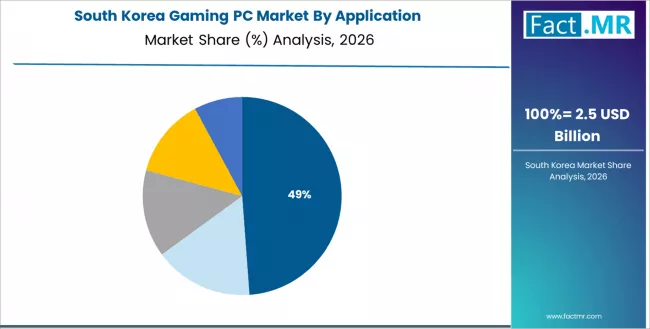
South Korea’s gaming PC market is projected to grow at a CAGR of 7.1% through 2036, supported by its established e-sports culture, structured competitive frameworks, and leadership in gaming technology. Competitive precision and system reliability remain key purchase criteria across professional and enthusiast segments.
- Mature competitive gaming environments drive consistent demand for premium gaming PCs.
- Strong regulatory and performance standards support adoption of advanced gaming systems.
Why is Content Creation Driving Gaming PC Demand in the USA?
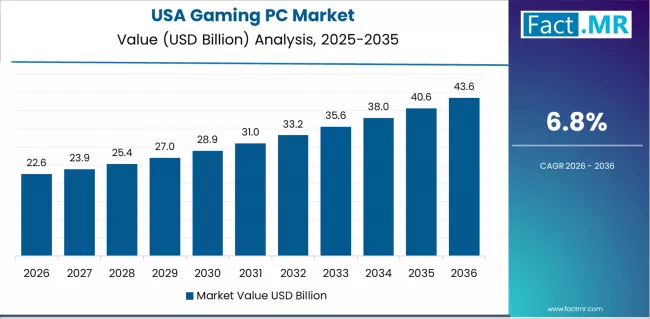
The USA gaming PC market is expected to grow at a CAGR of 6.8%, supported by expansion of content creation, live streaming, and performance-focused gaming applications. Users increasingly seek systems capable of handling gaming, production, and streaming workloads simultaneously.
- Growth in streaming and content creation is increasing demand for high-performance gaming PCs.
- Emphasis on performance efficiency supports adoption of specialized gaming configurations.
How do Performance Optimization Trends Support Germany’s Market Growth?
Germany’s gaming PC market is projected to grow at a CAGR of 5.9%, supported by strong consumer focus on system reliability, performance optimization, and technical quality. Demand remains steady across enthusiast gaming and professional performance segments.
- Preference for technically optimized systems supports consistent gaming PC demand.
- Strong quality standards reinforce adoption of premium gaming hardware.
Why does Market Maturity Sustain Steady Growth in Japan?
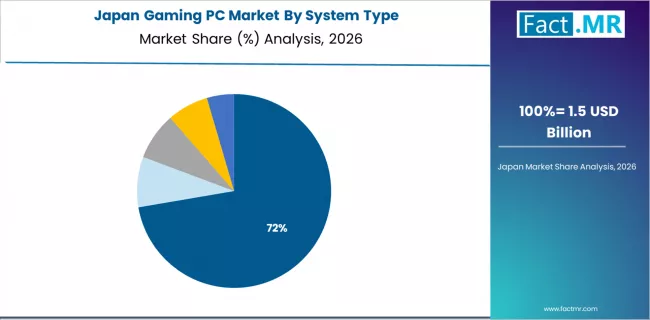
Japan’s gaming PC market is forecast to grow at a CAGR of 6.3%, supported by an established gaming culture, mature technology markets, and steady demand for high-quality systems. Users prioritizing performance consistency and long-term reliability drive adoption.
- Mature gaming markets sustain stable demand for quality gaming PCs.
- Focus on durability and performance supports continued adoption.
How is Competitive Gaming Development Supporting Growth in the UK?
The UK gaming PC market is projected to grow at a CAGR of 5.7%, driven by expanding competitive gaming participation, technology integration, and performance-focused gaming setups. Demand is rising across esports, streaming, and enthusiast gaming segments.
- Expansion of competitive gaming environments is driving demand for advanced gaming PCs.
- Emphasis on technical precision supports adoption of performance-oriented systems.
Competitive Landscape of the Gaming PC Market
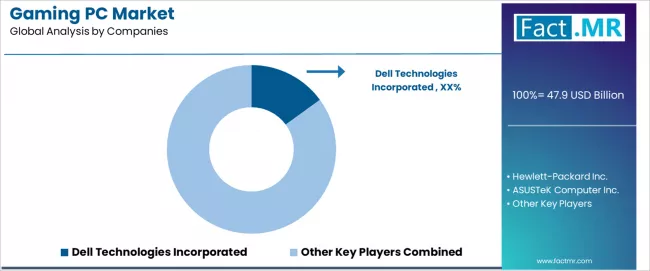
The gaming PC market is characterized by competition among established technology companies, specialized gaming manufacturers, and integrated performance solution providers. Companies are investing in advanced gaming technologies, specialized integration platforms, product innovation capabilities, and comprehensive distribution networks to deliver consistent, high-quality, and reliable gaming PC systems. Innovation in component optimization, thermal management advancement, and performance-focused product development is central to strengthening market position and customer satisfaction.
Dell Technologies Incorporated offers a a strong focus on gaming innovation and comprehensive high-performance solutions, offering premium and enthusiast systems with emphasis on performance excellence and gaming heritage through its Alienware brand. Hewlett-Packard Inc. provides integrated gaming solutions with a focus on mainstream market applications and competitive price networks.
ASUSTeK Computer Inc. delivers comprehensive gaming technology solutions with a focus on enthusiast positioning and performance efficiency. Micro-Star International Co. Ltd. specializes in comprehensive gaming systems with an emphasis on competitive applications. Corsair Gaming Incorporated focuses on comprehensive gaming components with advanced design and premium positioning capabilities.
Key Players in the Gaming PC Market
- Dell Technologies Incorporated
- Hewlett-Packard Inc.
- ASUSTeK Computer Inc.
- Micro-Star International Co. Ltd.
- Corsair Gaming Incorporated
- Razer Incorporated
- Origin PC Corporation
- NZXT Incorporated
- CyberPowerPC Systems USA Incorporated
- iBUYPOWER Computer Corporation
- Falcon Northwest Computer Systems
- Digital Storm LLC
- Maingear Voodoo LLC
- System76 Incorporated
Scope of the Report
| Items | Values |
|---|---|
| Quantitative Units (2026) | USD 47.9 Billion |
| System Type | Desktop Gaming PCs, Gaming Laptops, Mini Gaming PCs, Workstation Gaming Systems, Other System Configurations |
| Application | Competitive Gaming, Content Creation, Virtual Reality Gaming, Casual Gaming, Others |
| End-User | Individual Gamers, Esports Organizations, Content Creators, Gaming Cafes, Others |
| Price Range | Entry-Level Systems, Mid-Range Systems, High-End Systems, Premium Configurations |
| Regions Covered | North America, Europe, Asia Pacific, Latin America, MEA, Other Regions |
| Countries Covered | China, USA, South Korea, Germany, Japan, UK, India, and 40+ countries |
| Key Companies Profiled | Dell Technologies Incorporated, Hewlett-Packard Inc., ASUSTeK Computer Inc., Micro-Star International Co. Ltd., Corsair Gaming Incorporated, and other leading gaming PC companies |
| Additional Attributes | Dollar sales by system type, application, end-user, price range, and region; regional demand trends, competitive landscape, technological advancements in gaming engineering, competitive performance optimization initiatives, system enhancement programs, and premium product development strategies |
Gaming PC Market by Segments
-
System Type :
- Desktop Gaming PCs
- Gaming Laptops
- Mini Gaming PCs
- Workstation Gaming Systems
- Other System Configurations
-
Application :
- Competitive Gaming
- Content Creation
- Virtual Reality Gaming
- Casual Gaming
- Others
-
End-User :
- Individual Gamers
- Esports Organizations
- Content Creators
- Gaming Cafes
- Others
-
Price Range :
- Entry-Level Systems
- Mid-Range Systems
- High-End Systems
- Premium Configurations
-
Region :
-
North America
-
Europe
- Germany
- UK
- France
- Italy
- Spain
- Nordic Countries
- BENELUX
- Rest of Europe
-
Asia Pacific
- China
- India
- Japan
- South Korea
- Australia
- Rest of Asia Pacific
-
Latin America
- Brazil
- Argentina
- Rest of Latin America
-
MEA
- Saudi Arabia
- UAE
- South Africa
- Rest of MEA
-
Technology
Games of the Future 2025 Offers $5M Prize Pool

“Phygital” sports combine traditional athletic competition with its digital counterpart in a unified format that requires competitors to excel in both dimensions. Teams begin the challenge in the digital round before facing off again in the physical arena, with victory determined by the combined results of both performances.
This model reflects the growing convergence of technology and real-world performance, offering a new and immersive form of sporting competition.
More than 850 athletes from 60 countries will participate, representing clubs, emerging talents, and new faces across 11 phygital sports disciplines.
Faisal Al Bannai, Adviser to the UAE President for Strategic Research and Advanced Technology Affairs and Secretary-General of the Advanced Technology Research Council, said:
“Digital sport is not merely a new format; it embodies the mindset of a new generation.
Bridging physical excellence and digital mastery
Abu Dhabi is proud to host this edition of the Games of the Future 2025, providing an environment that brings together physical excellence and digital mastery. Our goal is to empower youth, accelerate innovation, and build communities around the technologies that will shape the future.”
The 2025 edition comes with strong global momentum, bringing together elite athletes from across the phygital sports ecosystem—competitors who demonstrate exceptional physical performance alongside advanced digital skills.
The event will feature professional athletes, esports stars, and rising phygital talents, promising outstanding competitions that showcase the best of both the physical and digital worlds. The championship reflects the rapid transformation of sport in an increasingly interconnected world, positioning the 2025 edition as a pivotal milestone in the global evolution of this growing sector.
Abu Dhabi prepares to deliver an exceptional edition
The draw has determined the opening group-stage matchups across the various disciplines, setting the stage for the first competitive narratives that audiences will follow. As the event progresses, full competitive pathways will unfold, with clubs vying for qualification and top positions in the finals, which will feature a total prize pool of USD 5 million.
In parallel with the tournament, Abu Dhabi will host the Phygital Sports Summit on 17 December 2025. The summit will serve as an intellectual platform bringing together global experts, athletes, innovators, and decision-makers to discuss the evolution of hybrid sports. Its comprehensive program includes keynote addresses, panel sessions, and in-depth discussions on the intersection of sport and technology, human–AI integration, the future of youth engagement, athlete health in hybrid environments, and the sustainable legacy of phygital sports.
Summit sessions will be moderated by Amy Jane Gillingham, Mohamed Al Hosani, and Sabine Sassen, with participation from senior representatives of Phygital International, partners of the Games of the Future, and leading global figures shaping both the digital and physical sports movements.
Distinguished guests expected to attend include H.E. Dr. Ahmad Belhoul Al Falasi, UAE Minister of Sports, and a high-level international delegation featuring H.E. Ilham Aliyev, President of the Republic of Azerbaijan; H.E. Rawan bint Najeeb Tawfiqi, Minister of Youth Affairs of the Kingdom of Bahrain; Sheikha Deena bint Rashid Al Khalifa, Adviser for Planning and Development at Bahrain’s Ministry of Youth Affairs; and Dr. Osman Aşkın Bak, Minister of Youth and Sports of the Republic of Türkiye.
Sport of the next generation
Technology
The evolution of entertainment technology and its business impact – EUbusiness.com

Entertainment has always played a vital role in society, and the ways we access and enjoy it have changed drastically over time. Today, as online platforms, streaming services, and digital applications gain traction, businesses are rethinking their strategies in this evolving landscape.

Innovations in entertainment technology touch everything from live sports to gaming and betting, as seen at bet777, demonstrating how rapidly shifting trends impact the industry as a whole.
From analog to digital: the transformation of entertainment
The transition from analog to digital technology marks one of the most significant changes in entertainment history. In the past, physical media such as vinyl records, VHS tapes, and CDs were the norm. With the rise of digital formats, accessibility and distribution underwent a revolution. Digital streaming made it possible for consumers to access content instantly, eliminating the limitations of geography and physical storage. This convenience not only changed how audiences consume media but also how creators and companies distribute and monetize their content.
As digital solutions expanded, new forms of entertainment began to emerge. Video games, interactive apps, and online casinos grew in popularity, shifting the focus from passive viewing to active participation. The proliferation of high-speed internet and smartphones further fueled this transformation, enabling entertainment anywhere, anytime. Companies operating in this environment had to adapt quickly to user expectations of on-demand, personalized experiences. This ongoing evolution continues to blur the line between creators, distributors, and consumers, changing the entire value chain.
Streaming services and the shift in business models
The introduction of video and music streaming platforms led to fundamental changes in business models across the sector. Subscription services replaced one-time purchases, shifting the focus to long-term customer retention and recurring revenue streams. This not only increased competition among platforms but also gave rise to exclusive content and original productions as key differentiators. The bargaining power shifted to content creators and platforms able to attract large subscriber bases, while traditional broadcasters and physical retailers had to reinvent or risk becoming obsolete.
This transition has also extended to other segments such as live sports, eSports, and iGaming. Businesses are investing in digital infrastructure and user experience, offering everything from artificial intelligence-driven recommendations to interactive live events. The ability to collect and analyze user data allows companies to tailor offerings directly to their audiences, driving engagement and loyalty. Simultaneously, regulatory challenges and data security concerns have emerged, demanding new approaches to compliance and consumer protection in digital entertainment.
Immersive technology and the business of innovation
The latest chapter in entertainment technology is defined by immersive experiences such as virtual reality (VR), augmented reality (AR), and advanced streaming features. As these technologies find mainstream adoption, businesses are leveraging them to create new ways to engage users. For example, VR concerts, AR-enhanced sports statistics, and immersive gaming environments offer fresh revenue opportunities and deepen the user’s connection with content.
To stay competitive, entertainment companies must constantly invest in innovation and understand emerging trends. Cloud gaming and interactive betting platforms exemplify how technology influences entertainment choices and opens up lucrative business channels. The integration of social features, mobile-first strategies, and cross-platform compatibility are now prerequisites for success. As the landscape continues to evolve, keeping pace with technology and user preferences will be crucial for organizations aiming to thrive in the future of entertainment.
-
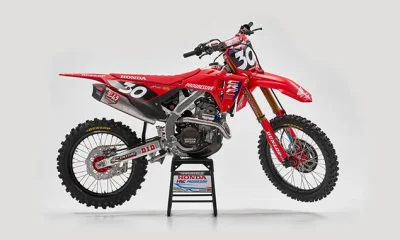
 Motorsports3 weeks ago
Motorsports3 weeks agoJo Shimoda Undergoes Back Surgery
-
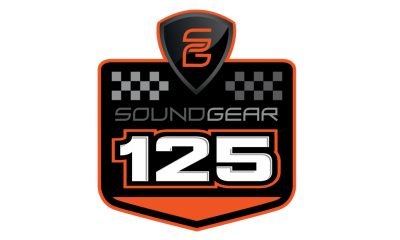
 Motorsports1 week ago
Motorsports1 week agoSoundGear Named Entitlement Sponsor of Spears CARS Tour Southwest Opener
-

 NIL2 weeks ago
NIL2 weeks agoBowl Projections: ESPN predicts 12-team College Football Playoff bracket, full bowl slate after Week 14
-

 Rec Sports3 weeks ago
Rec Sports3 weeks agoHow this startup (and a KC sports icon) turned young players into card-carrying legends overnight
-

 Rec Sports3 weeks ago
Rec Sports3 weeks agoRobert “Bobby” Lewis Hardin, 56
-
Sports3 weeks ago
Wisconsin volleyball sweeps Minnesota with ease in ranked rivalry win
-

 Motorsports3 weeks ago
Motorsports3 weeks agoPohlman admits ‘there might be some spats’ as he pushes to get Kyle Busch winning again
-

 Motorsports1 week ago
Motorsports1 week agoDonny Schatz finds new home for 2026, inks full-time deal with CJB Motorsports – InForum
-

 Motorsports3 weeks ago
Motorsports3 weeks agoIncreased Purses, 19 Different Tracks Highlight 2026 Great Lakes Super Sprints Schedule – Speedway Digest
-

 Rec Sports2 weeks ago
Rec Sports2 weeks agoHow Donald Trump became FIFA’s ‘soccer president’ long before World Cup draw

































